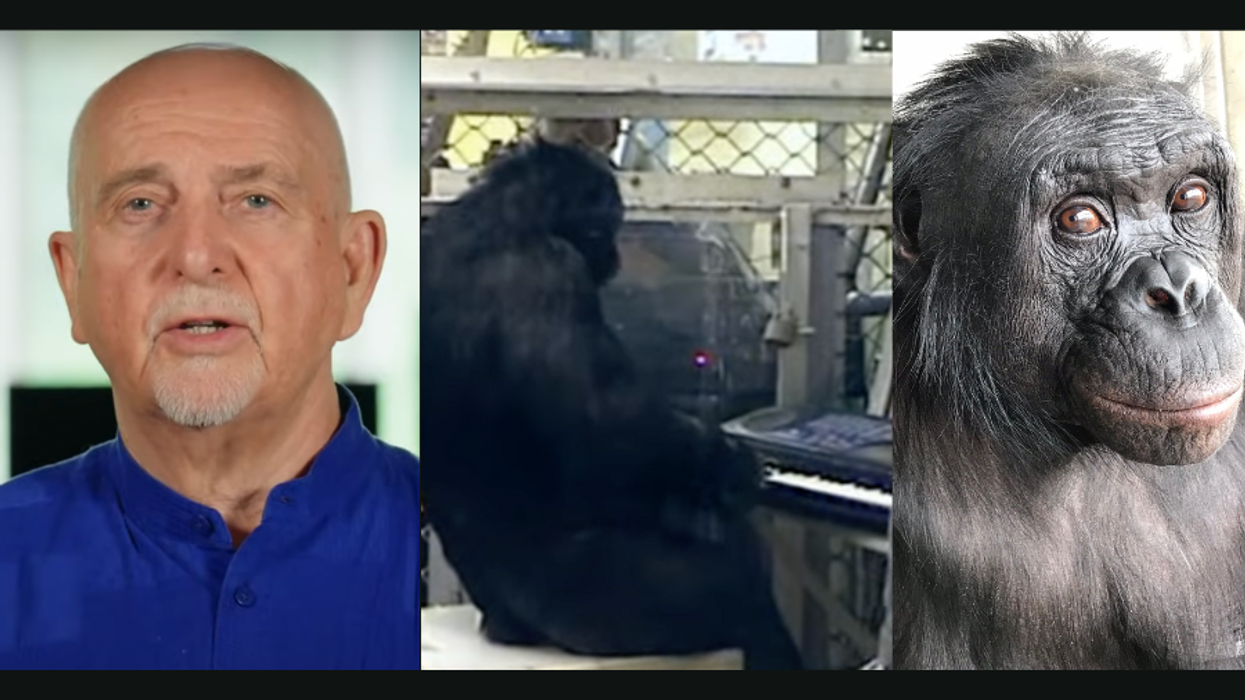If you’ve ever visited a monument or checked out a famous artwork in a museum, you probably lined up with a bunch of tourists and snapped a photo of it. For his ongoing project Volte-face, photographer Oliver Curtis does almost the same thing—but he’s facing what most people would consider to be the wrong way.
Curtis is, as he tells GOOD, interested in the scenery that is “ignored.” The project began when he took a trip to Egypt and visited the Great Pyramid of Giza (also known as the Pyramid of Khufu). As with nearly anyone who visits a great monument, Curtis felt upon first encounter that he had seen it before. And, in fact, he had—on postcards and posters, in television documentaries, and so on.
“I found myself intrigued as much by the surrounding landscape as by the pyramid itself,” Curtis says. “I was particularly struck by the appearance of a brand-new golf course sandwiched between the rubbish-strewn sand of the desert beneath my feet and the smoggy suburbs of Giza in the distance… There was a dialogue between what I was seeing and the monument behind me,” he says.
So he took photographs of the environment around the Pyramid of Giza. He did the same thing at the neighboring Pyramid of Khafre, and again and again at every monument he visited thereafter. “It seemed to raise many interesting questions, and by giving the title of the monument to my about-face image, I could draw on the viewer’s knowledge and familiarity with the landmark and all it stands for.”
For Curtis, each location featured in the Volte-face series seems to offer up some type of narrative, theme, or connection with the history of a place. And despite the great distances between monuments, and without any obvious historical connections, Curtis was surprised by how much every landscape had in common.
“Environmental misuse and neglect is often present, unsurprisingly so, since these are locations where all the attention is focused on a particular focal point or totem,” explains Curtis. “However, there were other connections, too. I was surprised by how often a face could be discerned within the landscape, with architectural features somehow arranged to return my gaze.”
The most challenging aspect of the process for Curtis was to set aside any preconceived notions he had about a particular place, so that he could be receptive to whatever he found upon arrival. Despite the fact that the photographs are taken from his perspective, Curtis feels that it is important for viewers to make their own personal interpretations of these images. This, he says, will depend on the viewer’s personal knowledge of a place and the historical associations he or she might make.
“The images often reflect my own mood at the time of taking, but that doesn’t mean that a viewer couldn’t also see something different in the landscape,” Curtis says. “I hope the compositions are interesting enough that they stimulate a number of associations. More than that, I hope that they encourage a fresh perspective on the most over-photographed places we visit.”
“[Hopefully] viewers of the project take away the idea that they don’t need to look as directed,” he muses. “And that there are many things in an otherwise familiar landscape that deserve our attention and tell us something more about the world we live in.”













